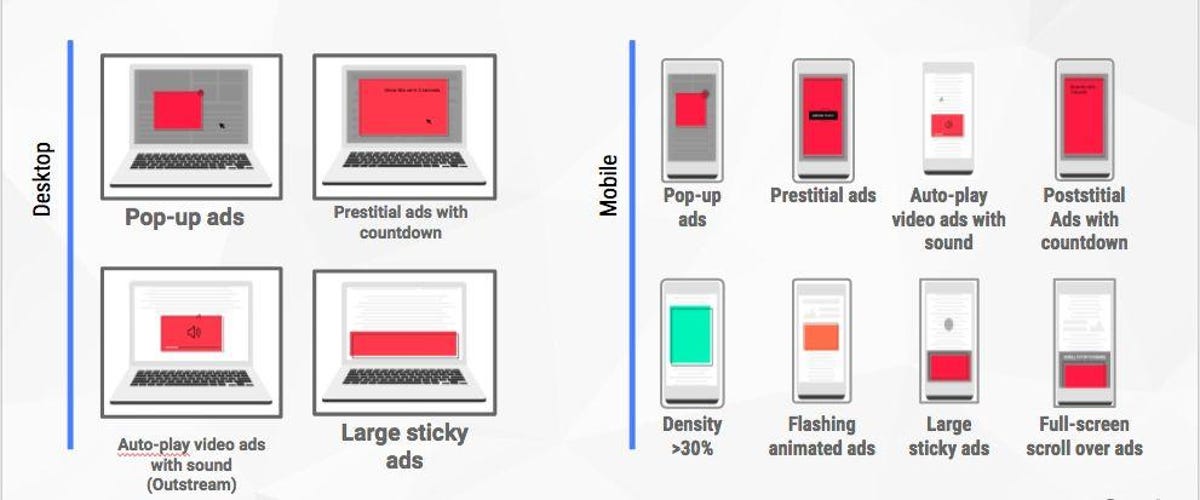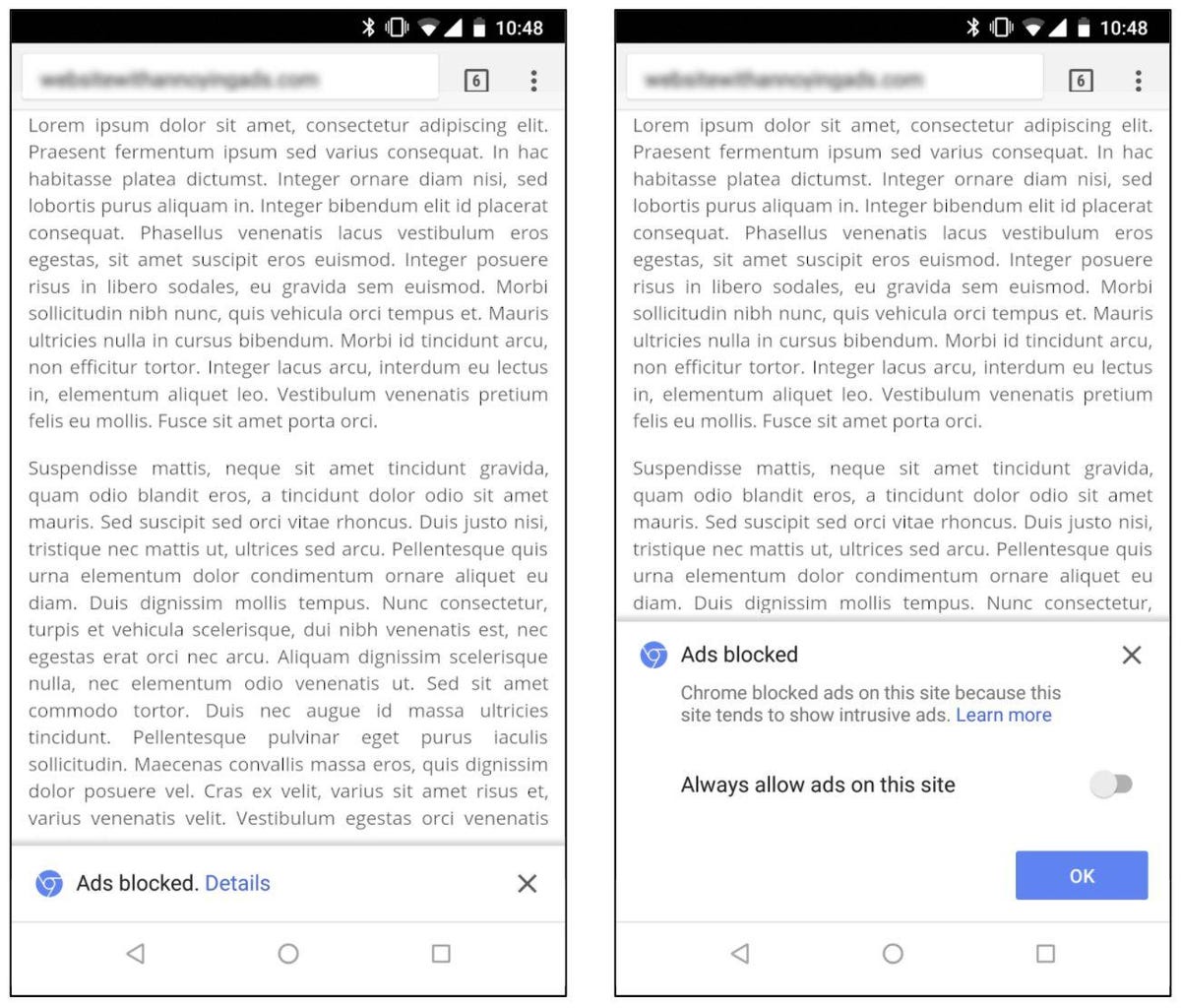Sure, sure… Chrome now blocks web ads. Pigs also fly, and pizza is now a health food.
But it’s true: As of today, Chrome does block ads — some of them, anyway. Here’s what you need to know about the browser’s new groove.
Not all ads, just ‘bad’ ads
Google’s goal is to improve the user experience by stripping away ads that “do not follow the Better Ads Standards.”
In real-world terms, say goodbye to ads that pop up, count down, automatically play video or sounds, or block the content you came to see.
This isn’t just a desktop thing
The new feature isn’t just for the desktop version of Chrome; it’s also arriving on the mobile browser. In fact, the latter will actually tackle a few additional ad-annoyances, including flashing animated ads and pages with an ad-density greater than 30 percent.

Chrome for mobile will be even more aggressive when it comes to blocking obnoxious ads.
Google
How do I get the new feature?
On the desktop, Chrome updates itself automatically, so you shouldn’t need to do anything except restart your browser. On the mobile side, update your app(s) as you regularly do.
What happens when Chrome finds bad ads?
It blocks it, natch. When Chrome detects a bad network request while loading a site, it’ll display an ad-block message and give you the option of disabling it.
Desktop users will see that notification in Chrome’s address bar; Android users get it in a small bar at the top of the screen, as shown below:


This is what it looks like when Chrome detects bad ads on your mobile device; and what happens when you tap Details.
Google
Wait, aren’t all ads bad?
Nope. Ads pay the bills for all the content we enjoy online. Case in point: this site. This very post. I’m on record as saying that ad-blockers can be useful at targeting the kinds of obnoxious ad-creep Chrome now combats, but you should definitely white-list sites that provide useful content. I do.
Where can I find out more?
Google’s Chromium blog recently explained what’s going on under Chrome’s hood, namely how its ad-filtering works.
After you’re done with that, hit the comments and let us know what you think about the new feature — and whether it might bring you back to Chrome if you’ve abandoned it for another.



